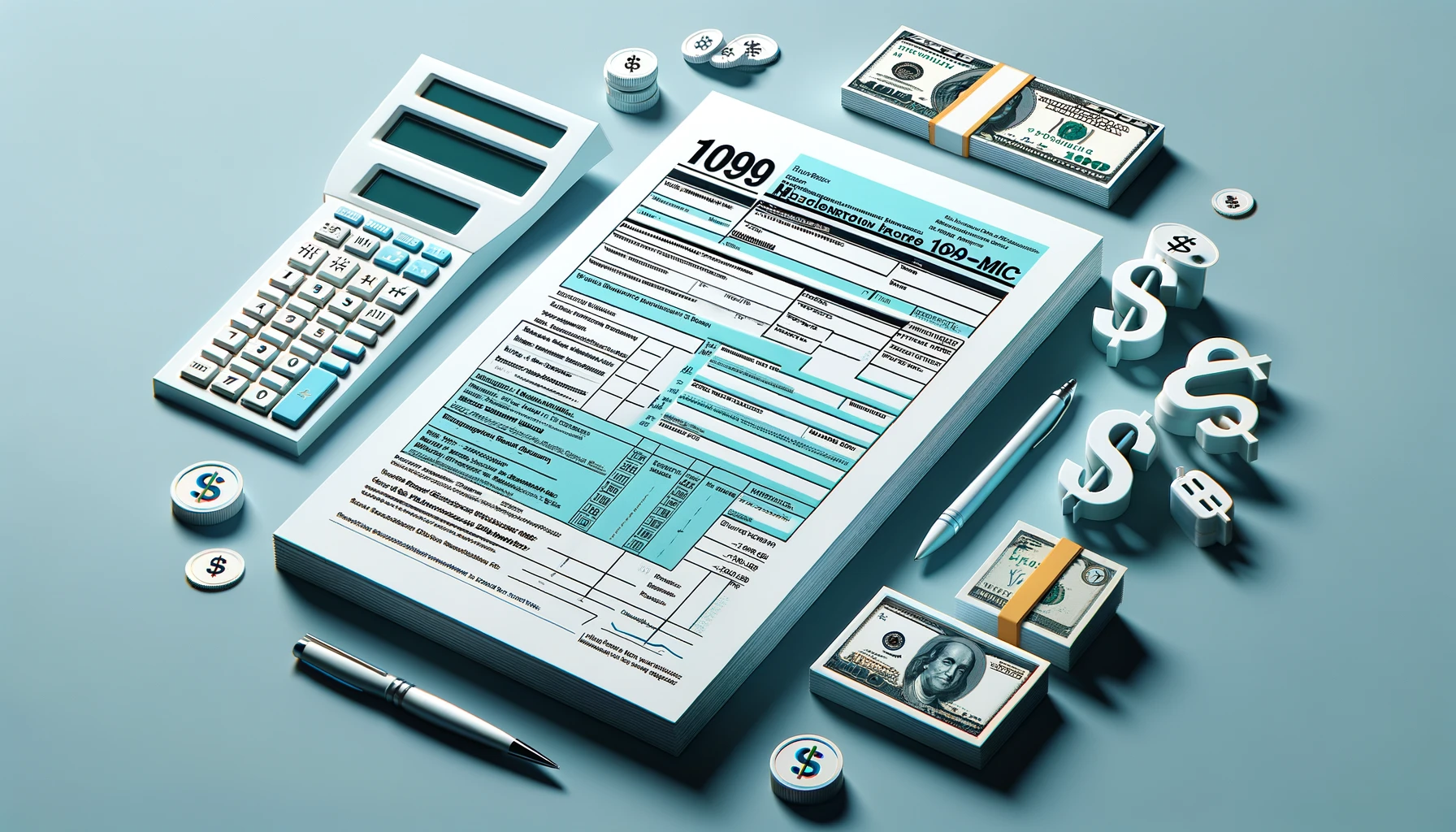
The IRS, or the Internal Revenue Service, is the tax collection agency of the United States federal government. Form 1099-MISC is a U.S. tax document used to report certain payments above $600 to the IRS. Its name, “MISC,” stands for miscellaneous information.
What is the purpose of 1099-MISC?
This form captures various income types not coming from standard wages. It’s sometimes called the “catch-all of tax documents.” Businesses send this type of financial data to the IRS to record:
- Rent payments. For space or equipment.
- Prizes. Such as from lotteries or fantasy sports.
- Medical payments. Including social security and medical care.
- General income. Like insurance proceeds or study payments.
- Payments to lawyers.
- Notional principal contract payments.
- Fishing proceeds.
- Royalties. Minimum of $10.
- Direct sales earnings. Above $5,000.
Exceptions to the $600 rule
Sometimes, 1099-MISC is required even if payments are below $600. Here are the examples.
- Royalties. For property use, including intellectual rights, if over $10.
- Backup withholding. When a court orders money withholding.
- Excess golden parachute payments. Over-compensating employees.
1099-MISC vs 1099-NEC
Businesses no longer use 1099-MISC for independent contractor payments. Since 2020, payments above $600 to freelancers are recorded on Form 1099-NEC. The main difference is the deadline and box where nonemployee compensation is recorded. For years prior to 2020, businesses used the old 1099-MISC for these payments.
Who should file 1099-MISC?
Entities like small to large businesses, pension trusts, and non-exempt farmers’ cooperatives utilize this form to document the funds they transfer to third parties within a year.
Filling out form 1099-MISC
First, get a completed Form W-9 from the payee. The form has multiple copies, each for different recipients like the IRS, state tax department, and the payee. Key sections are the boxes indicating payment types. There’s also a checkbox for foreign asset reporting under FATCA (Foreign Account Tax Compliance Act).
How to submit 1099-MISC?
- To the Recipient – mail it, or with permission, send it electronically.
- To the IRS – use the IRS FIRE system for online submission. For less than 250 forms, you can mail using scannable templates and Form 1096 from the IRS website.
Submission deadline
- To the recipient – January 31st.
- To the IRS – February 28 (paper) and March 31 (electronically).
Penalties
Late or incorrect 1099-MISC filings may incur fines. Extensions are possible via Form 8809.
Reporting 1099-MISC on tax returns
Typically, income from box 3 goes to the “Other income” on Form 1040.
For employees getting 1099-MISC
If you’re an employee and received a 1099-MISC, you should’ve received a W-2 instead. Consult your employer to negotiate the misunderstanding.
For independent contractors
You’ll likely receive a 1099-NEC. But there are other tax forms you might get, such as:
- 1099-G. It is used for tax refunds and government income.
- 1099-B. It covers income from securities sales or online bartering.
- 1099-LTC. This form is responsible for health and sudden-death insurance payments.
- 1099-R. You may get it for pension, retirement, or disability payments.
- 1099-DIV and 1099-INT. These forms cover dividends and interest.
- 1099-K. This form is used for income via payment processors.
- 1099-S. It covers property sales or exchanges.
***
This is a simplified summary of 1099-MISC, its practices, and rules. To avoid misunderstandings or miscalculations, consult tax guidelines or a professional when dealing with IRS forms.
« Back to Glossary Index